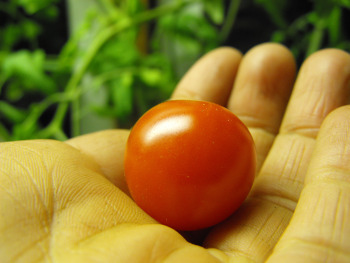
Food and Health, Part 5
 Did you know that studies showed, in
thirty-six market basket samples, potato chips had 207 residues of
toxic pesticides and industrial chemicals? But organic chips
didn't. Now I know why organic costs more--and why it's worth it!
Did you know that studies showed, in
thirty-six market basket samples, potato chips had 207 residues of
toxic pesticides and industrial chemicals? But organic chips
didn't. Now I know why organic costs more--and why it's worth it!
Unfortunately, many of us
can't afford organic foods or we live in areas where they are not
available. Diet for a Poisoned Planet looks at non-organic
commercial foods and lists them in three categories. Green light
foods are the safest. Eat plenty of them. Yellow light
foods have higher levels of pesticides, but should still be eaten if
organics are not available. Red light listed foods should be
replaced by organics. Still, the worst vegetable foods are better
for us than the worst animal foods.
Green light foods Steinman
lists include: Alfalfa sprouts, bean sprouts, asparagus, black
eyed peas, cabbage, carrots, cauliflower, corn, cranberry juice, dates,
eggplants, figs, fruit cocktail, grapefruit, green peas, hazel nuts,
lemons, lentils, lima beans, limes, navy beans, okra, onions, papayas,
peaches, pears, pecans, pineapples and pineapple juice, pinto beans,
radishes, red beans, sauerkraut, sesame seeds, snap green beans,
sunflower seeds, sweet potatoes, tangerines, watercress,
watermelons.
Some yellow light
foods: apple juice, applesauce, artichokes, avocados, bananas,
beets, blackberries, broccoli, brussel sprouts, cantaloupe, cherry
tomatoes, cranberries, coleslaw, escarole, grape juice, grapefruit
juice, iceberg lettuce, kale, kiwi, leeks, mushrooms, nectarines,
frozen orange juice, oranges, pomegranates, potatoes, raspberries,
canned spinach, string beans, swiss chard, bottled tomato juice, tomato
sauce, canned or stewed tomatoes, turnips, winter squash.
And some red light
ones: apples, raw apricots, celery, cherries, collard greens,
cucumbers, grapes, green peppers, dry roasted mixed nuts, peaches, dry
roasted peanuts, pears, plums, raisins, fresh or frozen spinach,
strawberries, summer squash, tomatoes.
Fortunately, many of these
are so easy to grow, even in a confined space.
Peaches
(canned in light/medium syrup)
Much safer than fresh peaches when it comes to pesticide residues, canned peaches had only forty-two chemical residues in thirty-six samples, including carbaryl and iprodione. If I were going to eat peaches, I would choose the canned product (in a lead-free can) without hesitation; processing and peeling can markedly reduce pesticide contamination. Fresh peaches are far more pesticide saturated. --Diet for a Poisoned Planet, David Steinman, Thunder's Mouth Press, 2007 |
This post is part of our Food and Health lunchtime series.
Read all of the entries:
|
Want more in-depth information? Browse through our books.
Or explore more posts by date or by subject.
About us: Anna Hess and Mark Hamilton spent over a decade living self-sufficiently in the mountains of Virginia before moving north to start over from scratch in the foothills of Ohio. They've experimented with permaculture, no-till gardening, trailersteading, home-based microbusinesses and much more, writing about their adventures in both blogs and books.
Want to be notified when new comments are posted on this page? Click on the RSS button after you add a comment to subscribe to the comment feed, or simply check the box beside "email replies to me" while writing your comment.
